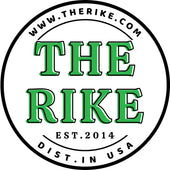Sustainable Urban Farming: Your Guide to Medicinal Herbs
As the world shifts towards urbanization, the need for sustainable practices has never been more critical. Urban farming is not only about growing food; it also incorporates the cultivation of medicinal herbs that can enhance our health and well-being. This guide delves into sustainable urban farming with a special focus on medicinal herbs, offering practical tips and insights for anyone interested in starting their own urban farm.
Table of Contents
- Benefits of Sustainable Urban Farming
- Getting Started with Urban Farming
- Top Medicinal Herbs to Grow
- Cultivation Tips for Medicinal Herbs
- Sustainable Practices in Urban Farming
- Challenges and Solutions
- Resources for Urban Farmers
- Frequently Asked Questions
Benefits of Sustainable Urban Farming
Sustainable urban farming serves as a crucial approach to mitigate the environmental impacts of urban growth. Here are numerous benefits associated with it:
- Improved Food Security: Growing your own medicinal herbs can greatly reduce dependency on store-bought products.
- Health Benefits: Many medicinal herbs can support your immune system, improve overall health, and have therapeutic properties.
- Environmental Impact: Urban farming reduces carbon footprints by lowering the distance food travels and supporting biodiversity.
- Community Building: Urban farms can strengthen community bonds through shared resources and knowledge.
- Educational Opportunities: Urban farms serve as living laboratories for schools and community groups, fostering an appreciation for nature.
Getting Started with Urban Farming
Starting a sustainable urban farm requires planning and resources. Here are essential steps to kick off your urban farming journey:
1. Assess Your Space
Begin with evaluating your available space, whether it’s a balcony, backyard, or rooftop. Think about light exposure, access to water, and how you will manage drainage.
2. Choose the Right Container
For urban farming, containers are your best friend. Choose from a variety of pots, raised beds, or vertical gardens based on your available space and the herbs you intend to grow.
3. Select Quality Soil
The foundation of your urban garden lies in the soil. Opt for organic soil mixes, enriched with compost to ensure nutrient availability for your medicinal herbs.
4. Plan Your Layout
Plan your layout considering plant height, sun exposure, and watering needs. Taller plants should be placed behind shorter ones to maximize sunlight absorption.
5. Choose Your Medicinal Herbs
Focus on herbs that are easy to grow and suits your climate. We will explore some popular options in the next section.
Top Medicinal Herbs to Grow
Choosing the right herbs is crucial for a successful urban farm. Here are some top medicinal herbs that are not only beneficial for health but also easy to cultivate:
1. Basil
Basil is known for its anti-inflammatory properties and has been used traditionally to treat various illnesses. It thrives in warm, sunny spots and can be grown year-round.
2. Mint
Mint is a versatile herb that can be used in teas and cooking. It’s known for its digestive benefits and can easily be grown in containers.
3. Rosemary
This aromatic herb is known for its medicinal properties, including improved memory and concentration. Rosemary thrives in well-drained soil and lots of sunlight.
4. Lavender
Lavender is not only beautiful but also has calming effects, making it beneficial for stress relief. It requires full sun and well-drained soil.
5. Thyme
Thyme is celebrated for its antimicrobial properties. The herb is drought-resistant and can flourish in a variety of conditions, making it ideal for urban farms.
Cultivation Tips for Medicinal Herbs
Once you have selected your medicinal herbs, it’s essential to understand their cultivation requirements for optimal growth:
1. Watering
Water your herbs consistently, ensuring the soil remains moist but not soggy. Different herbs may have varying water needs, so always research specific requirements.
2. Fertilization
Organic fertilizers help promote healthy growth. Consider compost, fish emulsion, or specific herb fertilizers to maintain nutrient levels in your soil.
3. Pest Management
Keep an eye out for pests and diseases that can affect your herbs. Implement organic pest control methods such as neem oil or companion planting to deter pests naturally.
4. Pruning
Regular pruning promotes bushier growth and can enhance the flavor and aroma of your herbs. Pinch off the leaves at the top to encourage lateral growth.
5. Harvesting
Knowing when and how to harvest is essential. Always harvest in the morning after the dew has dried for the best flavor and medicinal properties.
Sustainable Practices in Urban Farming
To promote sustainability, consider implementing the following practices in your urban farming routine:
1. Rainwater Harvesting
Collecting rainwater not only reduces your water bill but also provides an excellent nutrient source for your herbs.
2. Composting
Create a compost system to recycle kitchen waste and yard debris, enriching your soil while minimizing landfill contributions.
3. Biodiversity
Encourage biodiversity by planting various herbs and companion plants to attract beneficial insects and maintain a balanced ecosystem.
4. Organic Practices
Avoid synthetic pesticides and fertilizers. Opt for organic alternatives to ensure the wellbeing of your plants and the surrounding environment.
5. Community Engagement
Join or form a community garden to share knowledge, resources, and cultivate a supportive network among urban farmers.
Challenges and Solutions
While urban farming can be rewarding, you may face certain challenges. Here are common obstacles and effective solutions:
1. Limited Space
Many urban farmers struggle with limited growing space. Solutions include vertical gardening, container gardening, or utilizing every available nook, like windowsills.
2. Soil Quality
Urban soil can be contaminated or poor in quality. Invest in quality potting soil, and conduct soil tests if planting directly into the ground.
3. Light Limitations
Some urban environments block sunlight. Consider using grow lights to supplement natural light or select shade-tolerant herbs.
4. Climate Control
Extreme temperatures can affect plant health. Use protective covers for pots in winter or shade cloths during hot summers to maintain ideal growing conditions.
5. Legal Restrictions
Check local regulations regarding urban farming and herb cultivation. Ensure compliance by obtaining necessary permits and adhering to bylaws.
Resources for Urban Farmers
Here are useful resources to help you as you embark on your urban farming journey:
1. Online Communities
Join online forums and social media groups focused on urban farming for support, tips, and networking opportunities.
2. Books
Consider reading books like "The Urban Farmer" by Curtis Stone or "Square Foot Gardening" by Mel Bartholomew for practical advice.
3. Workshops
Participate in local workshops and classes offered by local universities or community centers to build your skills and knowledge.
4. Urban Farming Organizations
Connect with local urban farming organizations for resources, workshops, and networking opportunities.
5. Local Farmers' Markets
Visit farmers' markets to understand growing techniques and network with local farmers and producers.
Frequently Asked Questions
What are the benefits of growing medicinal herbs at home?
Growing medicinal herbs at home provides easy access to natural remedies, improves health, saves money, and encourages a more sustainable lifestyle.
Can I grow medicinal herbs indoors?
Yes, many medicinal herbs can thrive indoors as long as they receive adequate light and humidity. Herbs like basil and mint are great choices for indoor gardening.
How do I store harvested herbs?
Fresh herbs can be wrapped and stored in a cool, dark place or stored in the refrigerator. Dried herbs should be kept in airtight containers away from light and heat to maintain potency.
Are all herbs safe to consume?
No, not all herbs are safe for consumption. Always research each herb thoroughly before use, and consult a qualified herbalist or healthcare provider if unsure.
What tools do I need to start urban farming?
Essential tools include pots, soil, fertilizer, watering can, pruning shears, and plant labels. Additional tools may depend on your specific setup.
What resources are available for beginners?
Beginners can access numerous online resources, classes, and workshops focused on urban farming and herbal gardening. Additionally, local libraries often offer books on the subject.
Conclusion: Cultivate Your Green Thumb
Sustainable urban farming, especially the cultivation of medicinal herbs, is a fulfilling and rewarding endeavor. By following the guidelines outlined in this article, you can create your own urban oasis filled with health-boosting herbs. Embrace the journey, connect with your community, and contribute to a greener planet.
If you want to learn more about sustainable practices or explore additional resources, visit therike.com for insightful articles and tools to help you thrive in your urban farming adventure!





Leave a comment